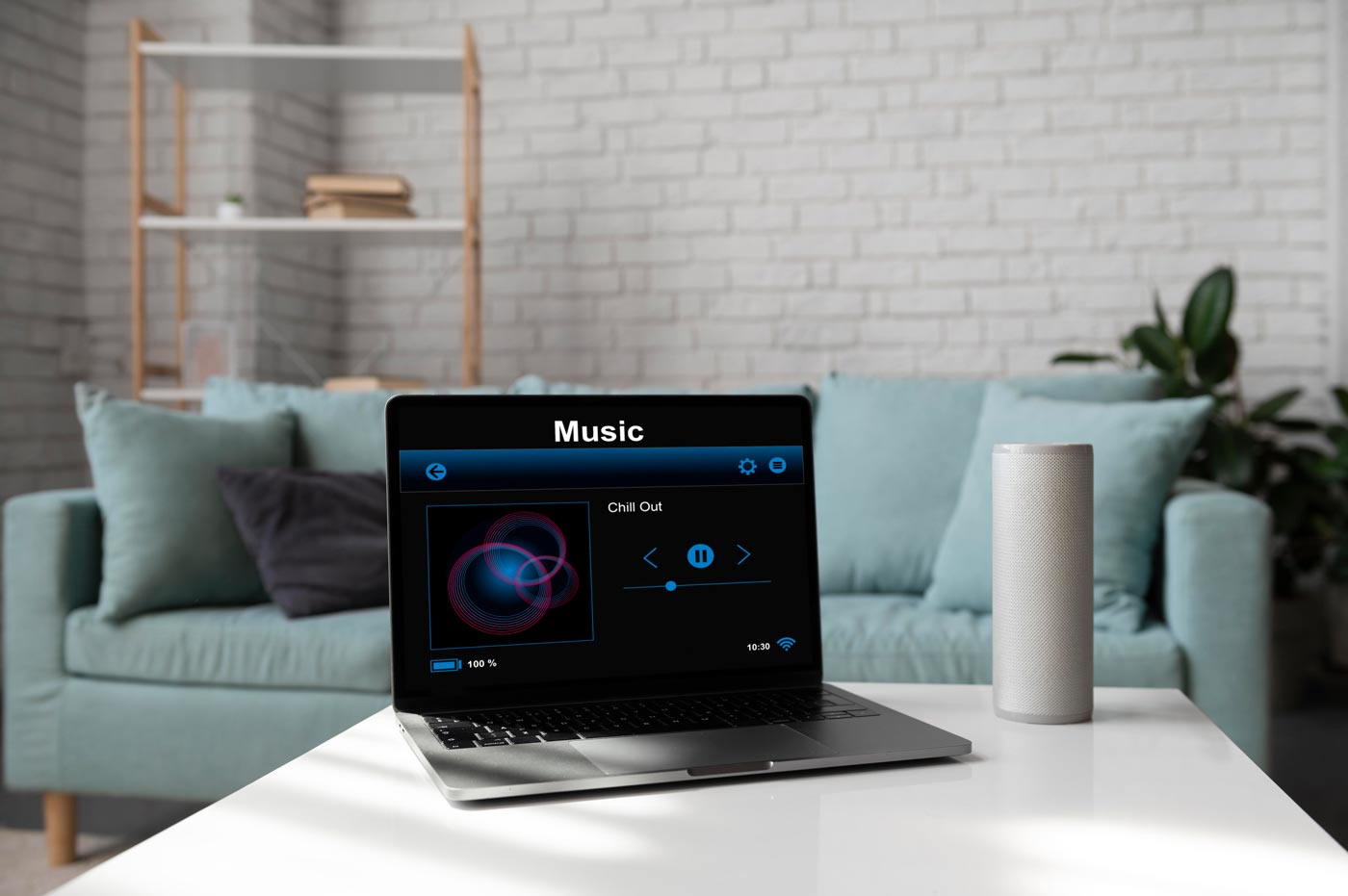Blogs

Whole-Home Audio: Music in Every Room
- Super User
The way music is enjoyed at home has changed. Portable Bluetooth speakers and soundbars offer quick solutions for single-room audio, but they often come with limitations—disconnected control, uneven sound distribution, and clutter. Whole-home audio systems solve these issues by providing a cohesive and flexible solution for delivering music across every room in the house.
Whole-home audio is about more than just background music. It’s about integrating sound into daily life in a way that feels natural and effortless. Whether preparing dinner in the kitchen, reading in the bedroom, or spending time outdoors, the right system creates a seamless experience that follows movement throughout the home.
A whole-home audio system begins with planning. The layout of the home, the number of zones, and the intended use of each space all influence the design. Each zone can operate independently or be grouped with other zones. This means different music can play in the living room while a podcast streams in the home office, or the entire house can be synced to the same playlist during a gathering.
Speakers are typically mounted in ceilings or walls to maintain a clean and unobtrusive look. These speakers are connected to centralized amplifiers and controlled through keypads, remotes, or mobile devices. The ability to hide components and wiring contributes to a more organized space while maintaining high-quality sound delivery.
One of the key benefits of a whole-home system is zone control. Each room, or zone, can be set to a different volume, source, or schedule. Volume in the kitchen can be lowered while conversation happens, while a louder setting in the backyard keeps a social event energized. This level of control also helps prevent sound from becoming overwhelming in quieter spaces like bedrooms or reading areas.
Sound quality is also more consistent with a whole-home system. Instead of relying on a single speaker to fill a space, distributed audio systems use multiple speakers calibrated for their specific environments. This helps ensure even sound coverage without hotspots or drop-offs. Rooms with high ceilings, hard flooring, or open layouts all present different acoustic challenges, and a properly installed system accounts for those variables.
Another important aspect is source flexibility. Today’s systems are designed to work with a wide range of inputs, including music streaming platforms, satellite radio, turntables, and local media servers. The goal is to make it easy to access content from any room, at any time. Whether it’s classical music for cooking, jazz on the patio, or a playlist in the shower, users can create an audio environment that supports their activities without having to rely on multiple devices.
System integration is also a consideration. Many audio systems can be linked to broader home control platforms for added automation. Preset scenes can be created to match daily routines. A morning scene may activate lights and begin playing news radio in the kitchen, while an evening scene might fade in relaxing music in the bedroom and living room. These automations are not only convenient—they enhance the comfort and rhythm of the home.
The decision between wired and wireless configurations depends on several factors. New construction projects are ideal for wired systems since cables can be run easily behind walls. Wired systems offer greater reliability and sound fidelity, with fewer dropouts or interference issues. In retrofit situations, wireless or hybrid approaches are sometimes more practical. These systems still provide solid performance while minimizing the need for invasive work in existing walls and ceilings.
Speaker placement, amplifier selection, and zone configuration all require thoughtful planning. Factors such as room size, use case, and materials all influence system design. Stone or tile flooring, vaulted ceilings, or large windows affect sound reflection and absorption. Taking these details into account ensures that the audio performs well and complements the space.
Installation typically involves routing cables, mounting speakers, and setting up control systems. Once the hardware is in place, system calibration ensures that audio levels and tone are balanced throughout the property. The goal is to make the system feel invisible while maintaining full control and high-quality performance.
Maintenance needs are minimal with whole-home audio systems. Components are built for longevity, and firmware updates are usually handled through apps or control interfaces. As needs change, systems can be expanded with additional zones or upgraded to include new audio formats or services.
Whole-home audio adds more than music to a house—it adds flexibility, convenience, and atmosphere. Whether working from home, relaxing after a long day, or hosting friends and family, music becomes an integrated part of the experience. With proper design and installation, the entire home becomes a responsive sound environment.



